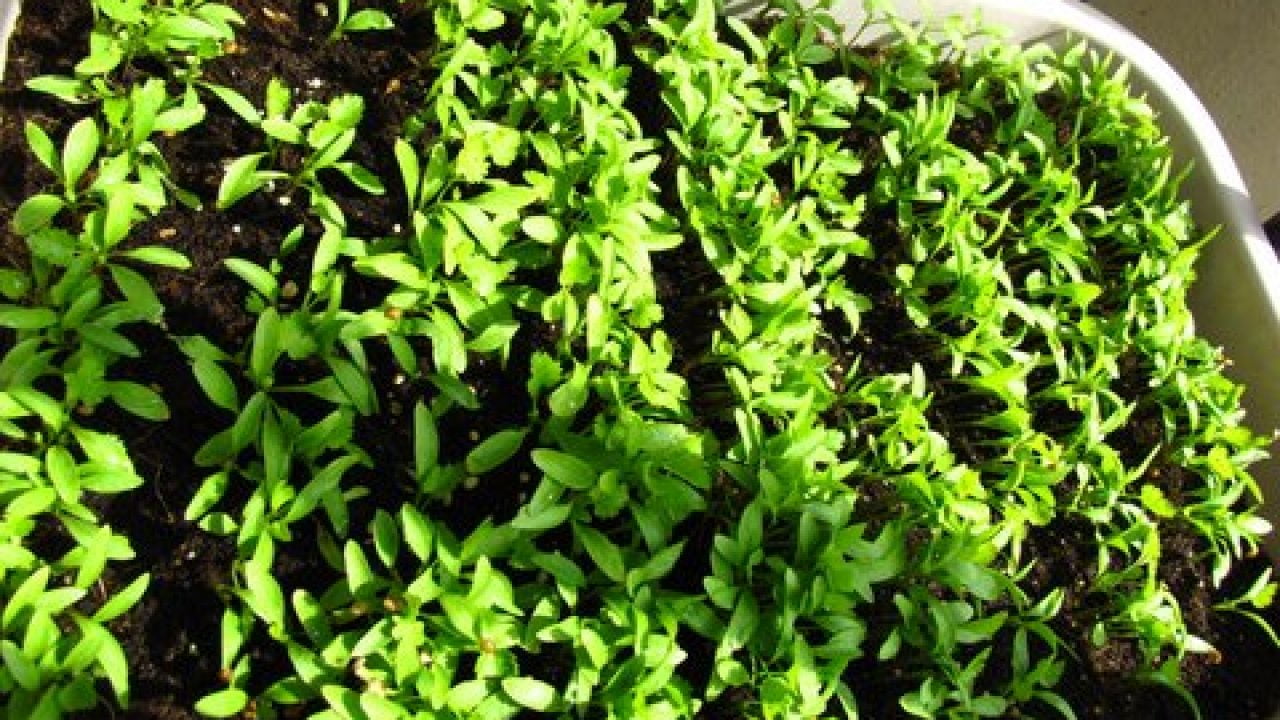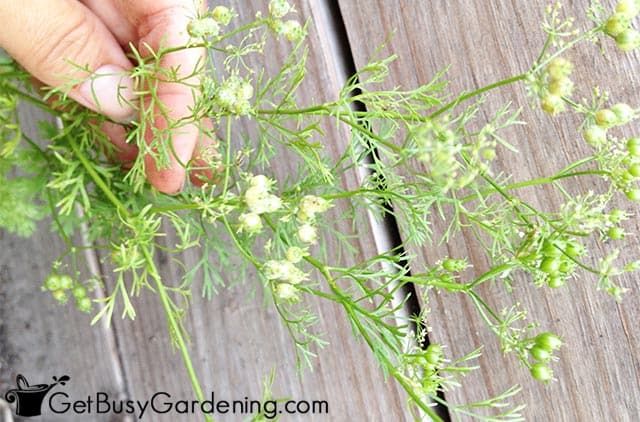

Pumpkin, squash, watermelon, and cucumber seedlings may be hard to tell apart because they belong to the same family, the cucurbits. Photo by Rasbak (Own Work) via Wikimedia Commons. You won’t see seed leaves emerging from pea seedlings because, unlike those of many other vegetables, pea cotyledons remain underground. Peas like to climb and will form oval leaflets with tendrils that readily wind around supports. Lettuce seedlings respond well to consistent watering and cooler temperatures and, if started indoors, will need to be hardened off before being planted outside.

Depending on whether the leaves will become soft or stiff, loose or bunched, lettuce seedlings will vary in appearance. The many varieties of looseleaf and head lettuce are characterized by their leaves. Until its first true leaves appear, it may be hard to recognize it! True leaves will have deeply serrated edges (more so than broccoli) and its leaves will be more pointed than rounded. Kohlrabi-a Brassica-initially resembles seedlings of other members of this family, like broccoli, cauliflower, and kale. Photo by Forest and Kim Starr via Wikimedia Commons.
#CILANTRO SEEDLINGS PHOTOS HOW TO#
The benefit of thinning kale is that you can enjoy the snipped seedlings in a salad! Learn how to grow kale. Kale comes in many varieties, with true leaves that may be either smooth or fancily ruffled. Its seed leaves may peek above the soil in about a week and the plants should be thinned to a foot apart when they reach five inches tall.

As the cucumber vine develops, its delicate-looking but tenacious tendrils will grip and climb anything in their path. The oval seed leaves of emerging cucumber and squash plants look very much alike, but the cucumber’s true leaves will be triangular and lobed with a fuzzy surface and serrated (toothy) edges. Vicente Selvas (Own Work) via Wikimedia Commons. CarrotsĬarrot seedlings in the earliest stages may be mistaken for grass because their seed leaves, unlike some other vegetable cotyledons, are tall and thin. A young carrot’s true leaves, shown below, have a distinctive, fern-like shape. Learn how to grow broccoli and cauliflower. Broccoli (and Cauliflower)īroccoli and cauliflower seedlings produce two kidney-shaped seed leaves before their true leaves, which are more rounded and may have vaguely serrated edges. Photo by Tepeyac (Own Work) via Wikimedia Commons. Because several seedlings can grow from one beet “seed,” you may need to thin them by snipping some off at ground level. Young beets put forth smooth, oblong green leaves on red or pinkish/purple stems. With proper watering, beet seedlings will emerge in five days to two weeks after planting.

Its true leaves will be smooth-edged and arranged three to a stem, with two opposite each other and one above. The bean seedling’s first seed leaves often appear to be heart-shaped. Here’s a quick visual guide to some of the easiest vegetables to grow from seed. Vegetable Seedling Identification: Pictures and Descriptions The cotyledons, having served their purpose, will eventually die off. While your seedlings sport their early cotyledons, it can indeed be difficult to distinguish them from each other and from weeds!Īfter the true leaves emerge, which can take several weeks, you’ll be able to spot more differences between seedlings as they take on the special shape and form of their kind. They mainly serve as “snack packs”-energy bars for the infant plant to consume so that it can put forth its own true leaves. The first two leaves that many vegetable seedling put forth are called cotyledons ( seed leaves), which do not pattern themselves after the leaves of the mature plant.


 0 kommentar(er)
0 kommentar(er)
